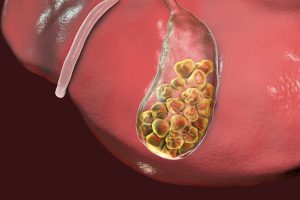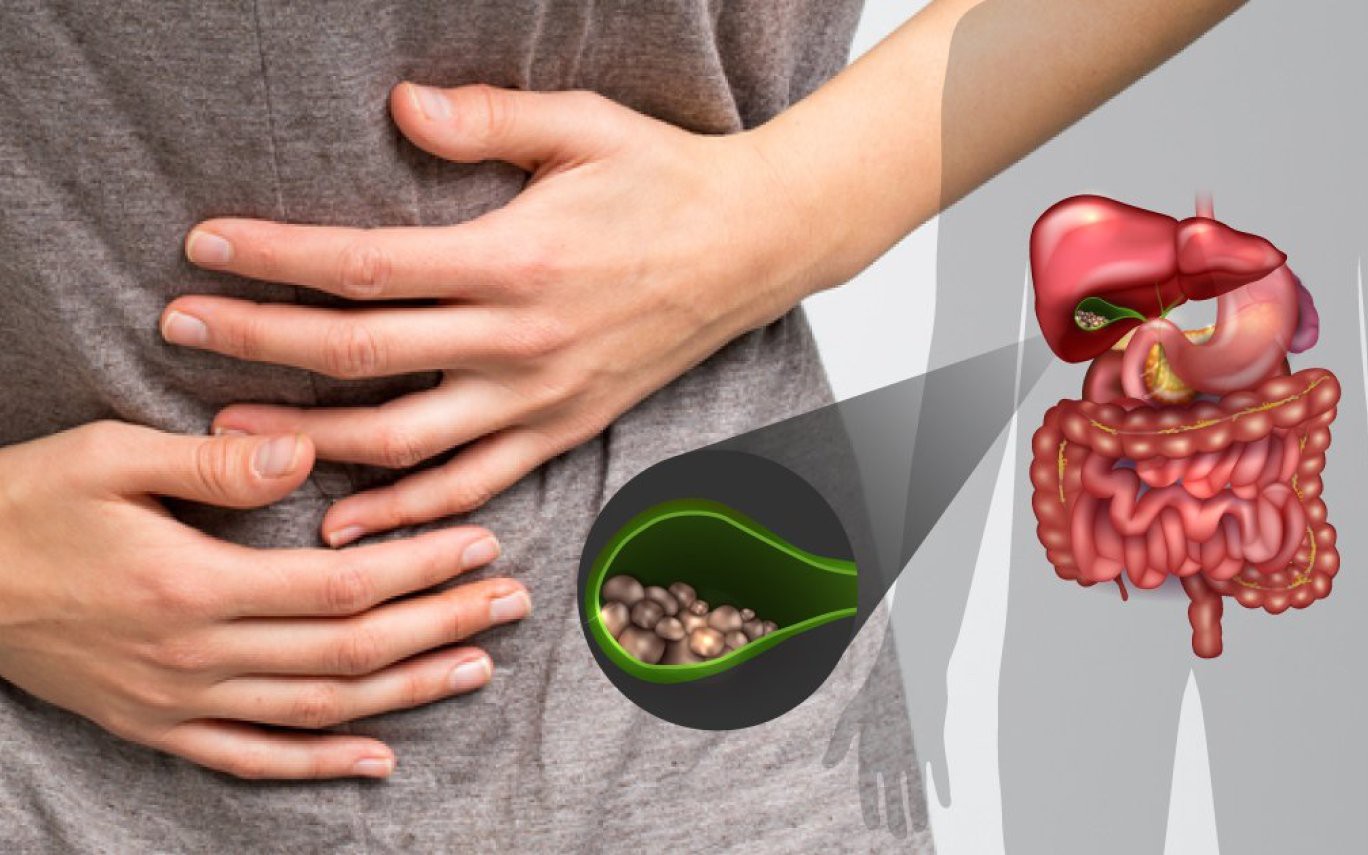Two main factors are to blame for the formation of stones: stagnation of bile in the gallbladder and an increase in the concentration of salts in bile due to metabolic disorders.
Gallstone disease (GSD) is a disease in which stones form in the gallbladder or bile ducts.
Gallstone disease occurs quite often. As a rule, adults suffer from it, especially overweight women of age. In Europe and America, 1/3 of women and 1/4 of men have gallstone disease.
Causes
Two main factors are to blame for the formation of stones: stagnation of bile in the gallbladder and an increase in the concentration of salts in bile due to metabolic disorders.
Gallstone disease can be triggered by:
overeating, starvation, irregular eating;
sedentary lifestyle, especially sedentary work;
pregnancy;
taking hormonal contraceptives;
obesity;
dyskinesia of the biliary tract;
diseases of the pancreas.
What’s happening?
The formation of stones in the gallbladder occurs as a result of the deposition of dense particles of bile. Most stones are composed of cholesterol, bilirubin (a pigment in bile), and calcium salts. They interfere with the normal functioning of the gallbladder, which serves as a reservoir of bile.
Sometimes, with shaking driving, overeating or the action of other provoking factors, a stone can come out into the mouth of the bile duct (biliary colic) and clog it. As a result, the outflow of bile from the bladder is disrupted, its walls are overstretched and the person feels severe pain. This can lead to inflammation of the gallbladder – acute cholecystitis. Inflammation can also spread to nearby organs – the pancreas, duodenum, stomach.
the outflow of bile from the bladder is disrupted, its walls are overstretched and the person feels severe pain. This can lead to inflammation of the gallbladder – acute cholecystitis. Inflammation can also spread to nearby organs – the pancreas, duodenum, stomach.
How does it manifest?
While the stones are not in the duct, but calmly lie in the gallbladder, a person may not even guess about his illness. The first warning signs by which one can suspect gallstone disease: heaviness in the right hypochondrium, bitterness in the mouth, nausea and belching.
Sometimes the stone comes out of the gallbladder https://en.wikipedia.org/wiki/Gallbladder into the bile ducts. In this case, an attack of the so-called biliary colic occurs: a sharp pain occurs in the right hypochondrium or in the upper abdomen. She can “give” to the right collarbone, right arm, or back. At the same time, there is bitterness in the mouth, nausea and vomiting, which does not bring relief.
If the stone (with a relatively small size) was able to bypass the ducts and fall into the duodenum, the attack stops on its own, and the stone comes out with feces. Otherwise, there is a blockage of the biliary tract and there is a risk of developing acute cholecystitis and mechanical (subhepatic) jaundice.
